Exbury Gardens: The wild woodland tamed by a Rothschild to become one of Britain's great gardens
Untamed woodland was brilliantly transformed into a pioneering garden at Exbury, thanks to the vision of Lionel de Rothschild. Mark Griffiths discovers how his legacy is being continued.
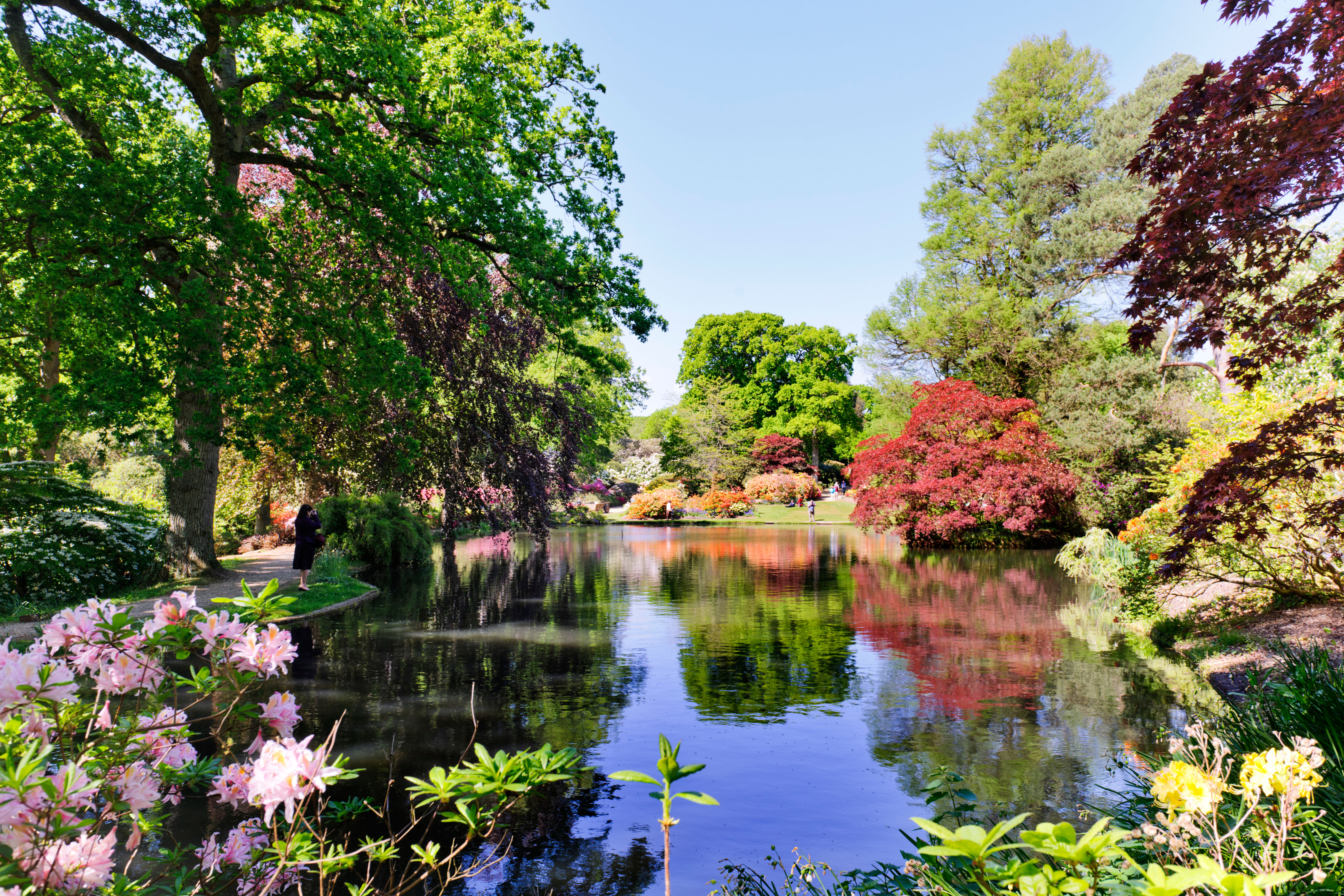
‘It all came about because of a postbox,’ Lionel de Rothschild tells me. ‘In 1912, my grandfather, Lionel, and grandmother, Marie-Louise, moved to Inchmery, not far from here. He’d become interested in growing rhododendrons and other acid-lovers, hence the appeal of this part of Hampshire, with the Solent’s climate and the New Forest’s soil.
‘Before very long, he needed to expand the garden, but he ran into an obstacle — a public postbox that, on absolutely no account, could be moved. It seemed he was stuck.
'Then a solution presented itself: this place, Exbury, Inchmery’s far larger neighbour, came up for sale. My grandfather acquired it in 1919. He renovated and enlarged its house as a home for his family and began making its land fit for his plants.’
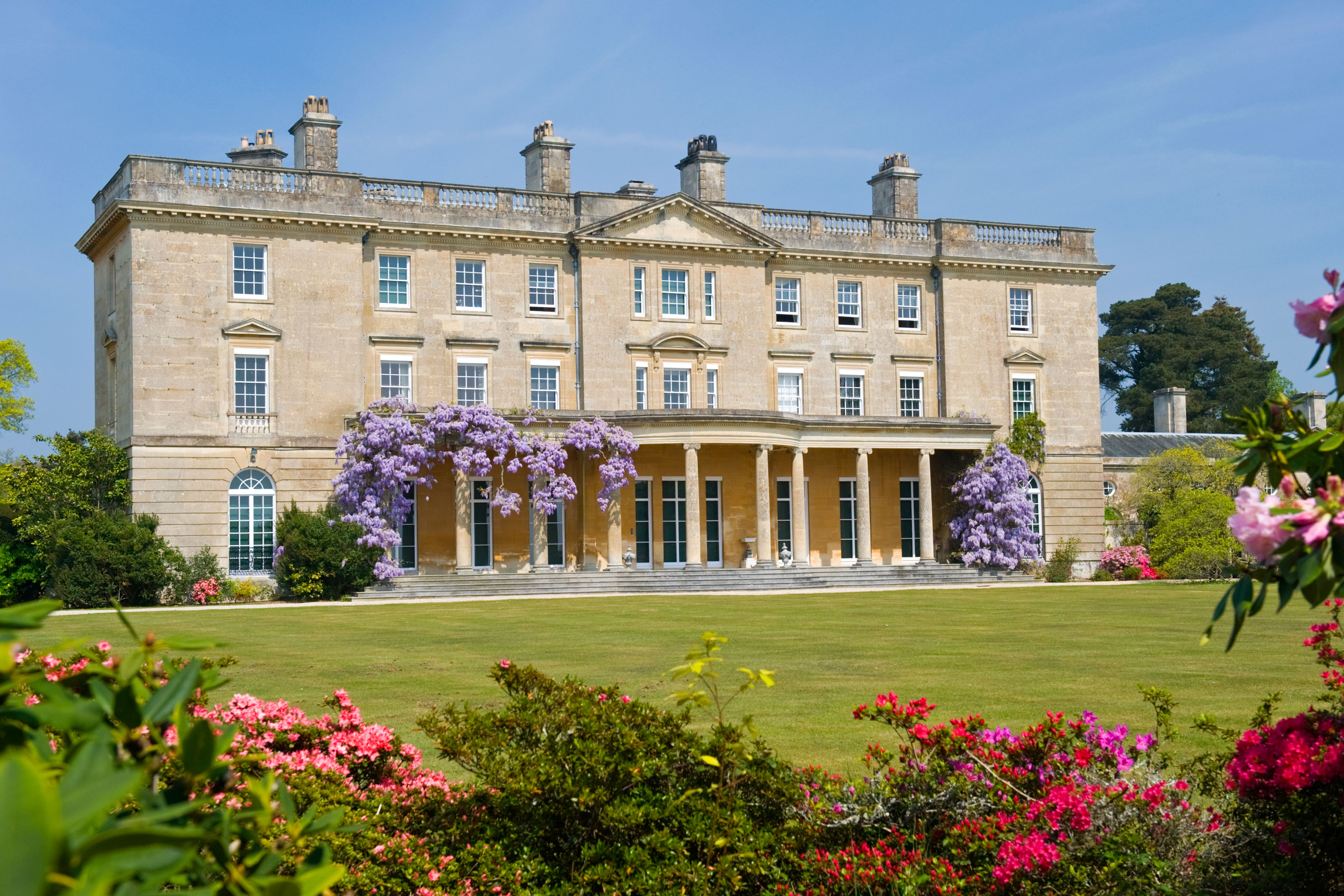
We’re strolling through the outcome of that purchase: Exbury Gardens, which celebrates its centenary in 2019. Adorning each grove and glade along our route are treasures from a collection of more than 30,000 species, hybrids and cultivars that is unique in its scientific and cultural importance.
However, Exbury is even more than a great collection. It works, in both senses, as a garden: as a place of consummate artistry and exquisite beauty and as a producer, pioneering garden styles and plants that have been adopted the world over. Inchmery’s immovable postbox ought to be stuffed with thank-you letters.
Exbury’s creator, Lionel de Rothschild, described himself as a ‘banker by hobby but a gardener by profession’. This was characteristically self-effacing. He and his brother Anthony were partners in N. M. Rothschild and Sons, the mighty bank founded by their great-grandfather. In horticulture, Lionel was more than a match for the best professionals.
'They continued for a decade. A team of 60 gardeners worked in their wake, planting the prepared ground under Lionel’s direction.'
Born in 1882, he was already tending his own small plot by the age of five. In his teens, he became involved in his father Leopold’s ambitious horticultural projects at Gunnersbury House, the family home to the west of London. He fell under the spell of Rhododendron and made his first hybrids in that genus.
Exquisite houses, the beauty of Nature, and how to get the most from your life, straight to your inbox.
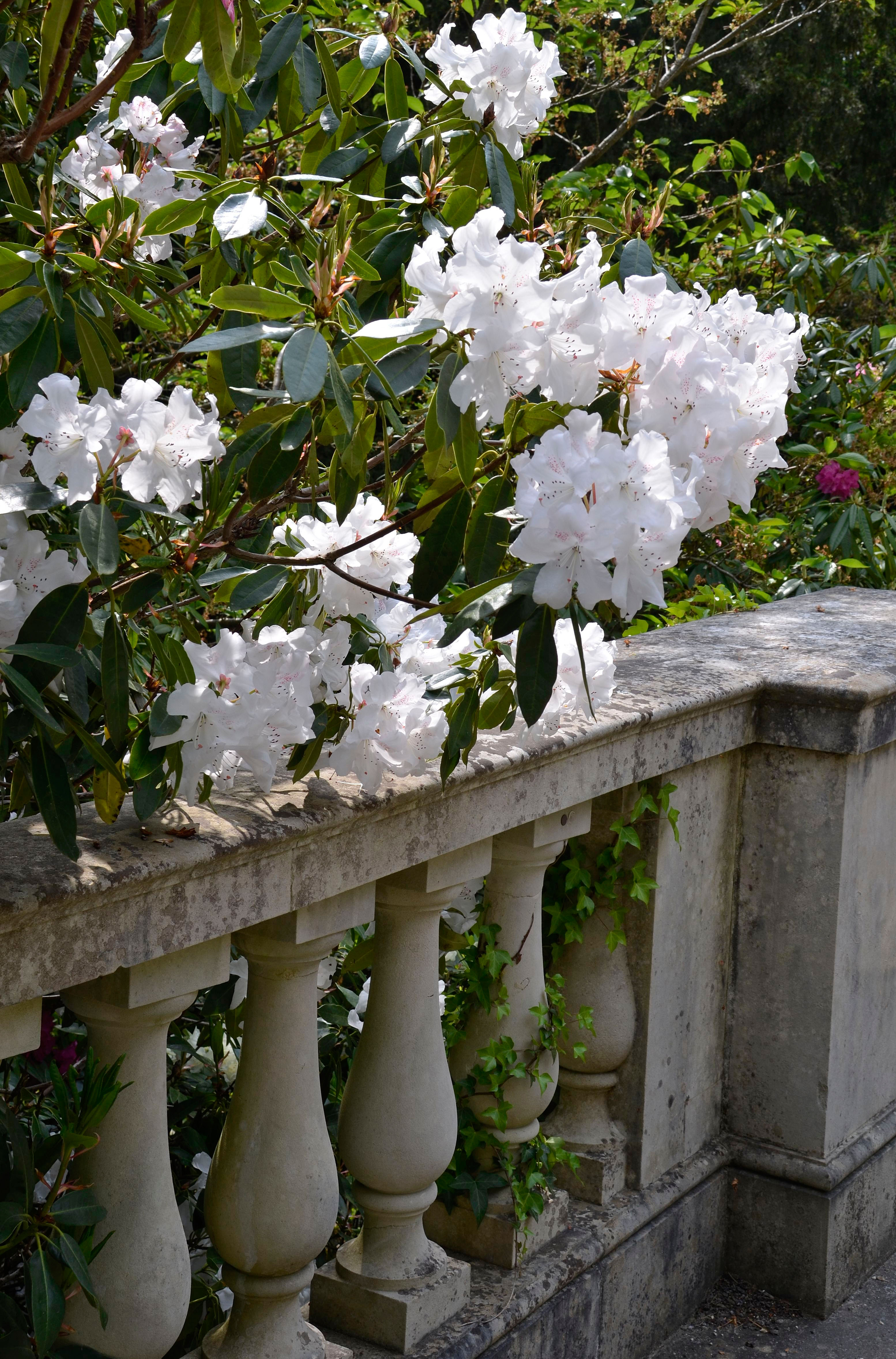
If he didn’t possess it already, he acquired a love of naturalistic planting from James Hudson, Gunnersbury’s revolutionary head gardener, and travelled with his camera, recording gardens and landscapes. Installed in 1901, Gunnersbury’s most famous Rothschild addition, its Japanese Garden, was inspired by Lionel’s photographs of a similar design on the shore of Lake Como.
When he bought Exbury, its grounds possessed a few fine trees planted by previous owners and some magnificent native oaks. From one of the latter, he suspended the great Burmese temple bell that had hung in the gardens at Gunnersbury. Otherwise, the estate principally consisted of untamed woodland and heath.
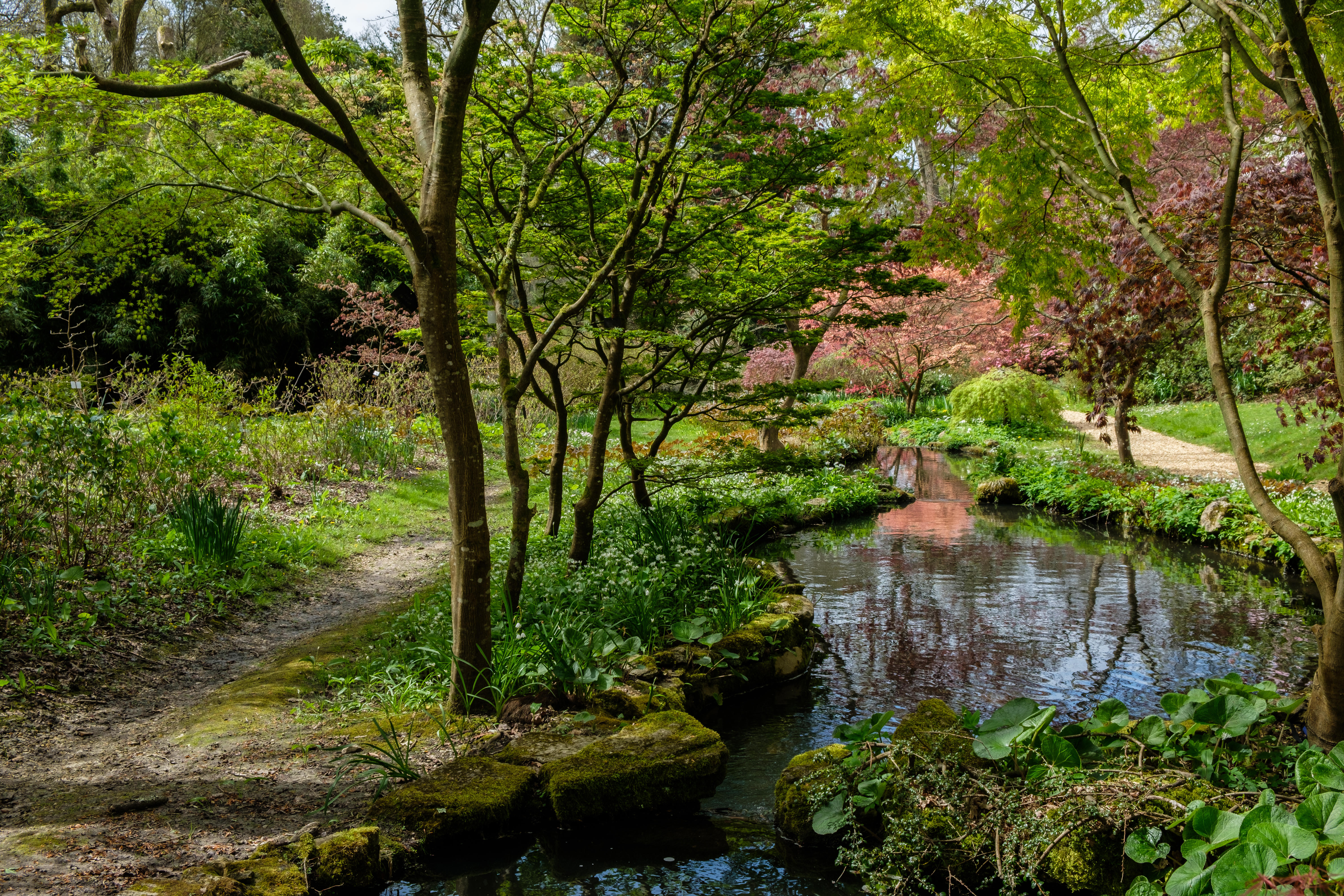
Starting in 1919, no fewer than 150 men fell to double-digging this terrain and incorporating leafmould and spent hops. They continued for a decade. A team of 60 gardeners worked in their wake, planting the prepared ground under Lionel’s direction. In that first year, they transformed 10 acres; ultimately, the garden would cover 200 acres navigated by 26 miles of paths.
As Exbury’s rainfall was inadequate, boreholes were installed, as well as a water tower with twin 20,000-gallon tanks. These fed 22 miles of pipes in an irrigation network that dispensed a quarter of a million gallons a day.
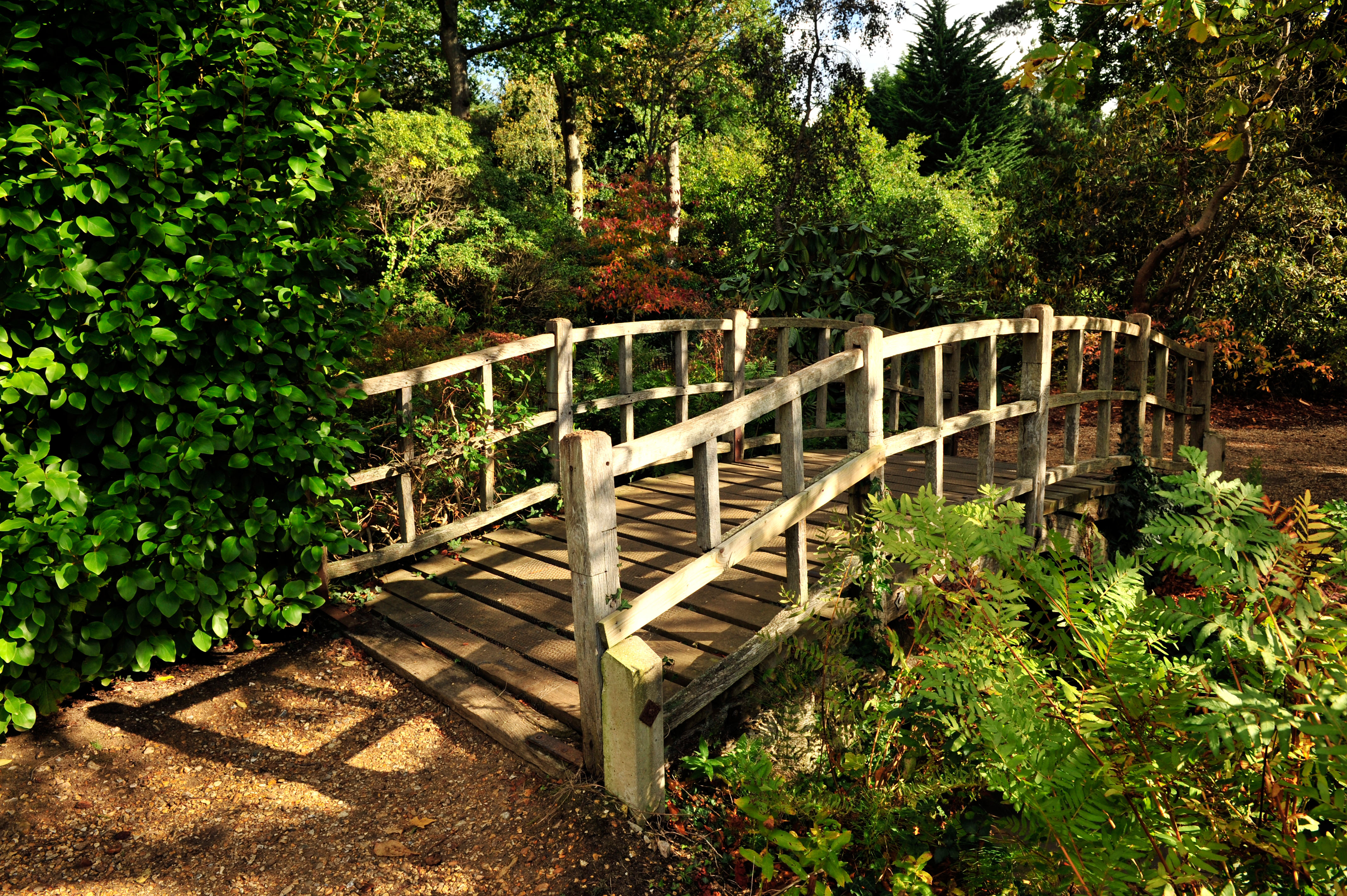
Small wooden footbridge at Exbury Gardens, Hampshire. Credit: AlamyThe excitement was not all outdoors. Acres of glasshouses were built to house tender rhododendrons, fruit, South African bulbs (notably, the sparkling, fluorescent Nerine sarniensis hybrids that are still an Exbury specialty) and an orchid collection that numbered 28,000 plants by the end of the 1930s.
To make all this possible, the estate had its own sawmill and smithy, plus a village of model new dwellings, complete with a social club, for its many workers.
For a garden of its era and status, Exbury was startlingly free of the grandiose and ostentatious. It relied instead on richly diverse informal planting to produce an effect of being enticed, enveloped and enchanted.
‘After my grandfather’s death in 1942,’ says Mr de Rothschild, ‘Country Life ran a tribute to him. It said that Exbury, despite its size, “possesses a feeling of intimacy”. I feel that’s right and something he strove for and achieved thanks to his eye for detail, command of colour and sense of atmosphere.’
In this, Exbury differed from other woodland gardens of the period and set the trend for those to come. As Lionel wrote, ‘the real art of gardening is not only to group plants to make a picture but also to see that the colours mingle well. What has been done in herbaceous borders can just as well be done on a large scale in the woodland’.
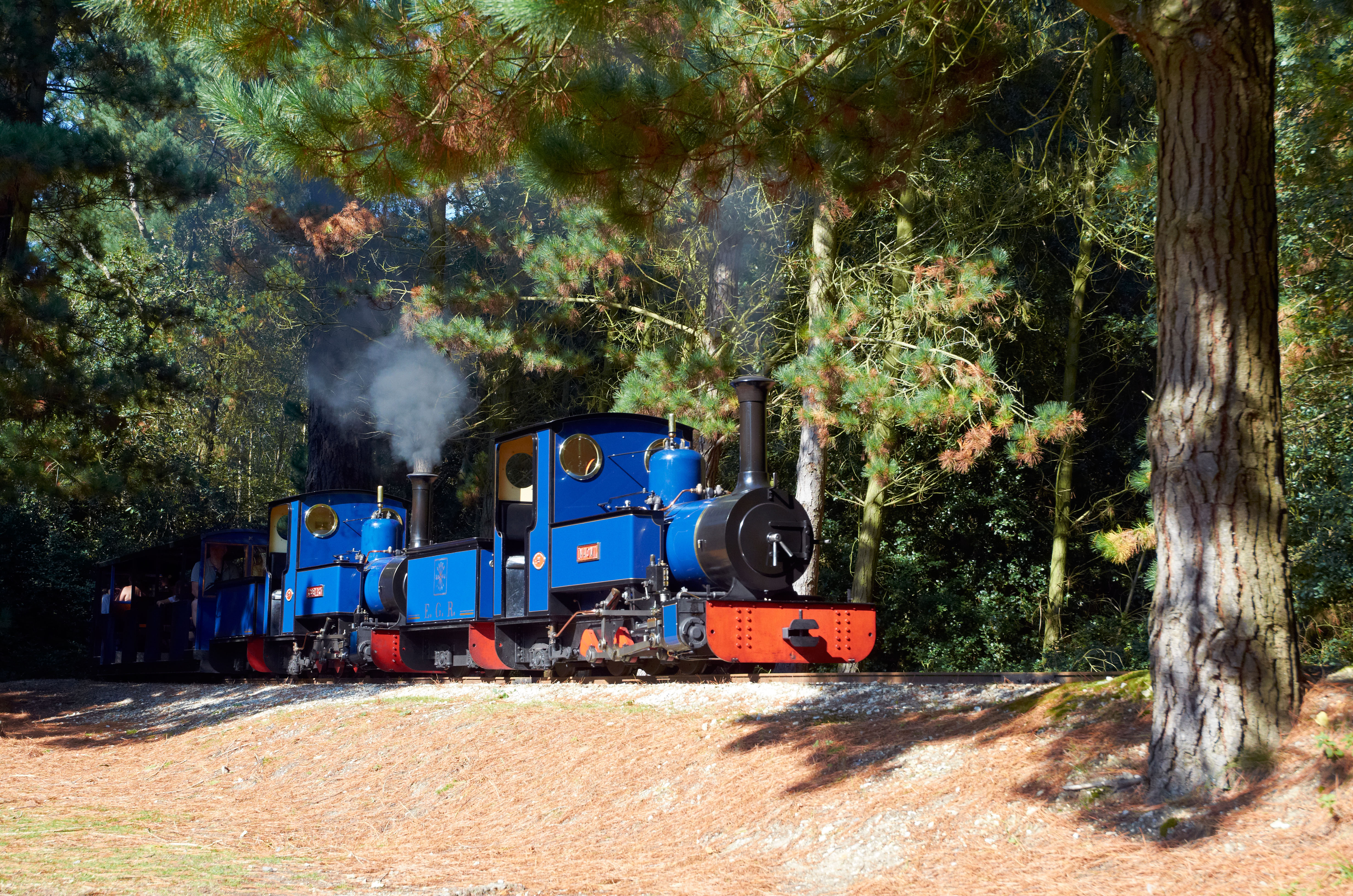
A much-admired proof of his point is Exbury’s lower pond. He planted its banks with different Kurume azalea cultivars and so densely that they joined in a multi-coloured frieze reflected in the water. This was not how they were used in their native Japan — it was Lionel’s invention and one that was soon copied in gar-dens and parks across Europe and the USA.
'By dawn, they’d sent 15 lorries filled with plants to London, enough to replace the ruined display in the marquee'
Already spectacular by 1923, this planting suggests that Exbury was an early beneficiary of E. H. Wilson, who introduced these azaleas to the West in 1919 (‘They're back–and hotter than a pyroclastic flow’, March 27). Reginald Farrer, George Forrest and Frank Kingdon-Ward were among the other plant-explorers who enjoyed a close relationship with Lionel as their patron. Exbury became a major destination for their discoveries, where new-found plants were received, raised, studied for science and assessed for garden-worthiness.
The most notable of these introductions were in the genus Rhododendron. They ranged from the cold-shy, but powerfully perfumed R. edgeworthii collected by Forrest to R. yakushimanum, a tough little beauty that was first obtained from Japan in 1934 and is now the world’s most popular species.

Exploration was not the only means of acquiring new plants. Lionel bred them, too. ‘My personal favourites are his Rhododendron cinnabarinum hybrids Lady Chamberlain, Lady Rosebery and Lady Berry,’ says Mr de Rothschild, ‘but the total range of possible choices is staggering.
My grandfather produced 1,210 crosses — and that was only the rhododendrons. He also worked on other genera. For example, he bred Cotoneaster Cornubia, C. Rothschildianus and C. Exburiensis, three cultivars that are still popular.’
The plight of a Chelsea Flower Show in the 1930s gives a sense of the sheer extent of Lionel’s interests. A day or so before it was due to open, frost devastated the exhibits, including those in what was then the big attraction — the main marquee. Lionel came to the rescue, mobilising his gardeners. They worked day and night, digging up Exbury’s finest trees and shrubs and plundering his glasshouses for orchids and other tender prizes.
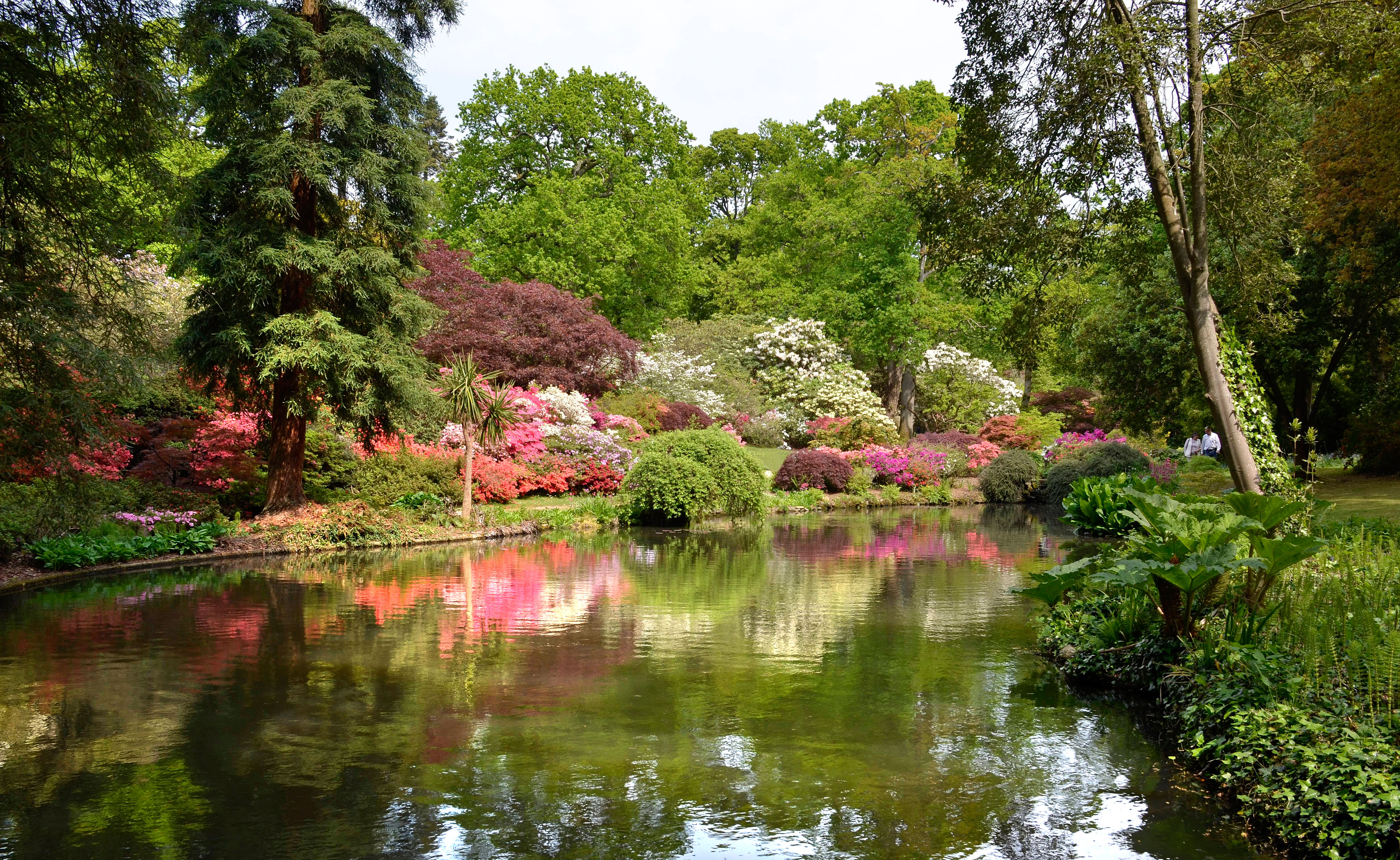
By dawn, they’d sent 15 lorries filled with plants to London, enough to replace the ruined display in the marquee. Not only did the show go on, but it was generally reckoned to be one of the best Chelseas yet. By the time the royal party arrived, the frost had been forgotten.
After Lionel’s death, his son Edmund, himself an ardent and expert horticulturist, took charge. ‘My father’s planting,’ says Mr de Rothschild, ‘was more kaleidoscopic. His fondness for vivid colours brought new variety and vibrancy to the garden. It also manifested itself in the hybrids and cultivars he raised.’
As if summoned, a clump of Fireball appears beside our path, one of the best deciduous azaleas bred by Edmund. With flame flowers and bronze-tinted foliage, this cultivar from 1951 is fast regaining popularity. At the better garden centres, sales in it are brisk; likewise, in several of its stablemates. On Exbury’s centenary, its signature plants are once more in favour.
'The most recent innovation would have given Exbury’s founder particular pleasure'
In 1955, Edmund threw open the gardens’ gates on a regular basis. About 80,000 visitors per year now enjoy a very full day there, but the opening hours were more limited at first. ‘One morning during the Soviet era,’ Mr de Rothschild remembers, ‘my mother was showing the Russian ambassador around when she noticed the time and said “We must go now, Mr Ambassador, as the public will be coming in a minute”. “What?” the good Communist retorted, “You mean you open these beautiful gardens to the public?”’
Today, Exbury Gardens is a charitable trust. Its directors include all four of Edmund’s children, Kate, Nicholas, Charlotte and Lionel, Kate’s husband Marcus Agius, who chairs it, and their daughter, garden designer Marie-Louise Agius. ‘We each contribute in our own way,’ says Mr de Rothschild, ‘and we’re very fortunate in having Tom Clarke, our gifted head gardener, and a splendid, eight-strong garden team, plus, of course, our wonderful volunteers.’
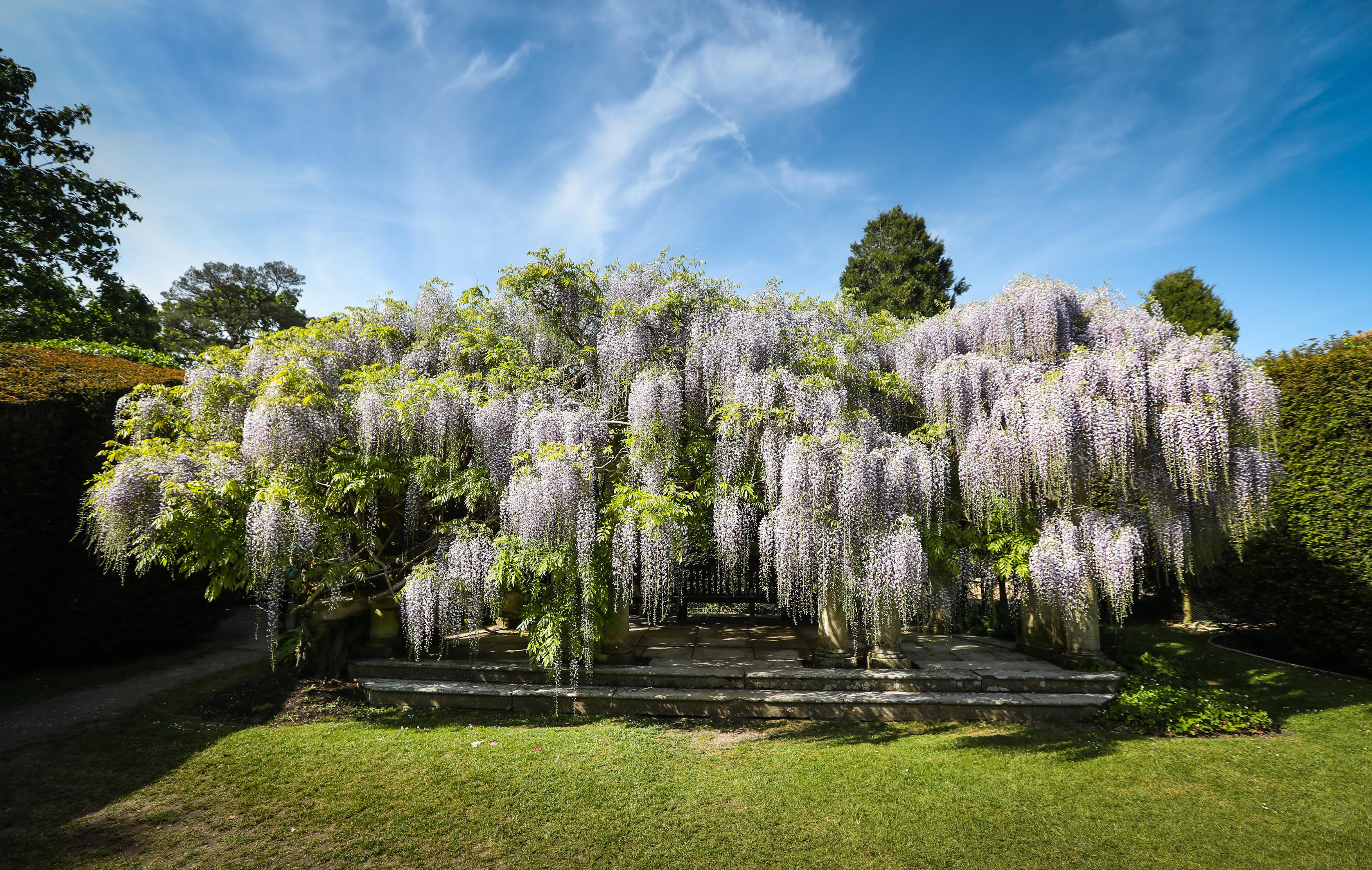
Together, they have guarded Exbury’s legacy, as well as extending its season and appeal. They have, for example, created the romantic Sundial Garden and a mazy archipelago of beds beside Exbury House that brilliantly marries herbaceous border with gravelly garrigue.
The most recent innovation would have given Exbury’s founder particular pleasure. An enclosed formal garden, it occupies a former tennis court. At its far end, Exbury’s involvement with Far Eastern flora is signalled by two specimens of the choice, small Chinese tree Heptacodium miconioides, one either side of a long stone seat that’s backed by Japanese azaleas. The central area consists of four beds planted with long-performing perennials and punctuated with conical dwarf ginkgos.

These surround four arcs of rose pergola arranged in a broken circle, the uprights fashioned from sash bars salvaged from a derelict glasshouse. Within this ring of roses, at the garden’s heart, a sunken paved area is inlaid with a stone depiction of the five arrows that are the Rothschild family emblem.
This is the Centenary Garden. Designed by Miss Agius, Lionel’s great-granddaughter, it celebrates Exbury’s past and points the way to a no less glorious future.
Exbury Gardens, Exbury, Hampshire, is open to the public — see www.exbury.co.uk for more details and times.

Credit: Justin Paget
Hamptworth Lodge: An Arts-and-Crafts house in the New Forest that blends in a touch of the Cotswolds
Hamptworth Lodge grew as a haven for collectors of all kinds, as well as a lovingly-created family home. Clive Aslet
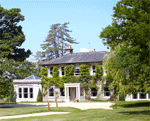
Country house hotel: The Pig, Brockenhurst, Hampshire
A charming hotel in the New Forest is a perfect escape which uses local produce, and has an enviable kitchen
-
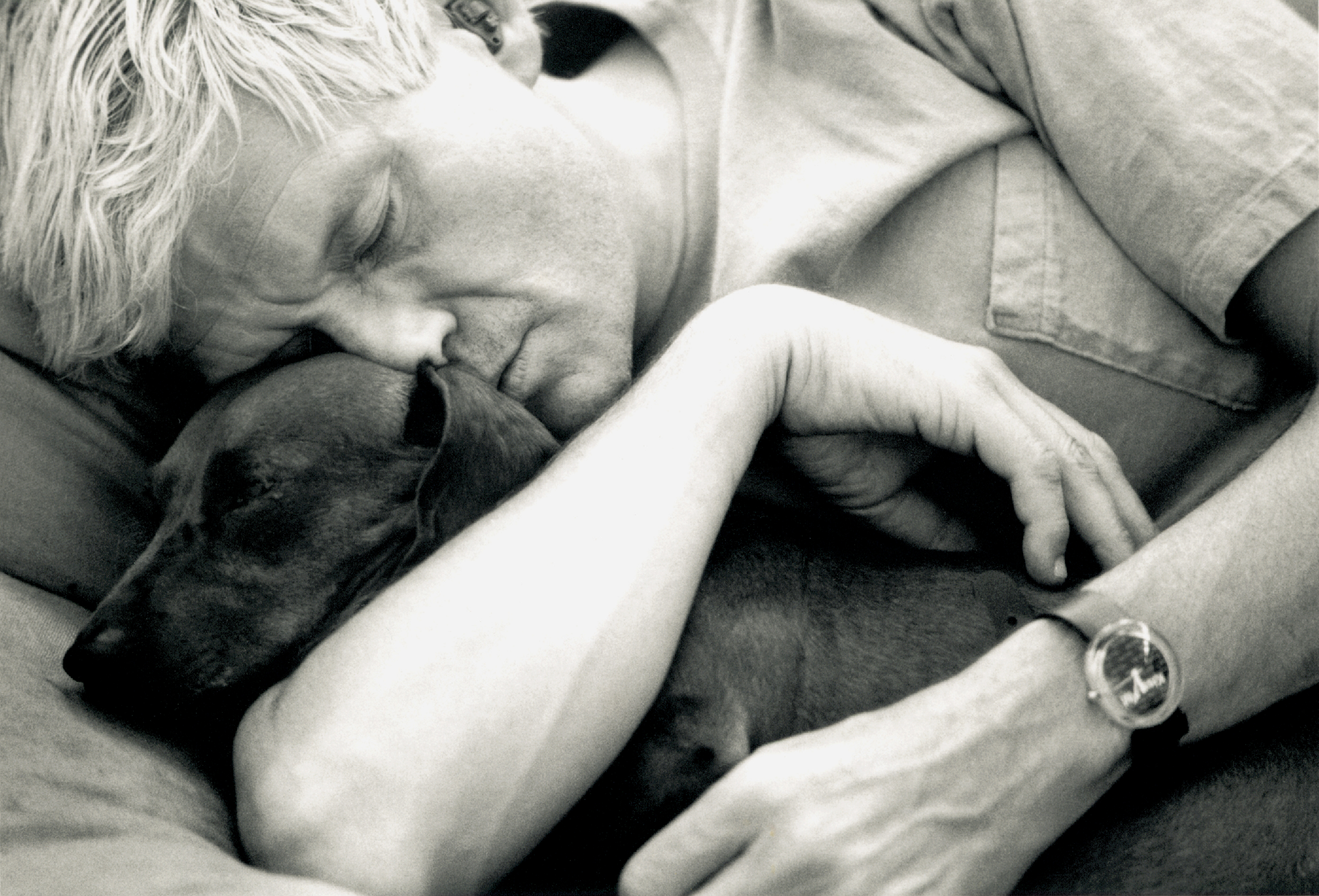 Canine muses: David Hockney's chocolate dachshunds, Stanley and Boodgie — who he painted over 40 times
Canine muses: David Hockney's chocolate dachshunds, Stanley and Boodgie — who he painted over 40 timesIn the second edition of our limited series, we meet some more of the dogs who've inspired our greatest artists.
-
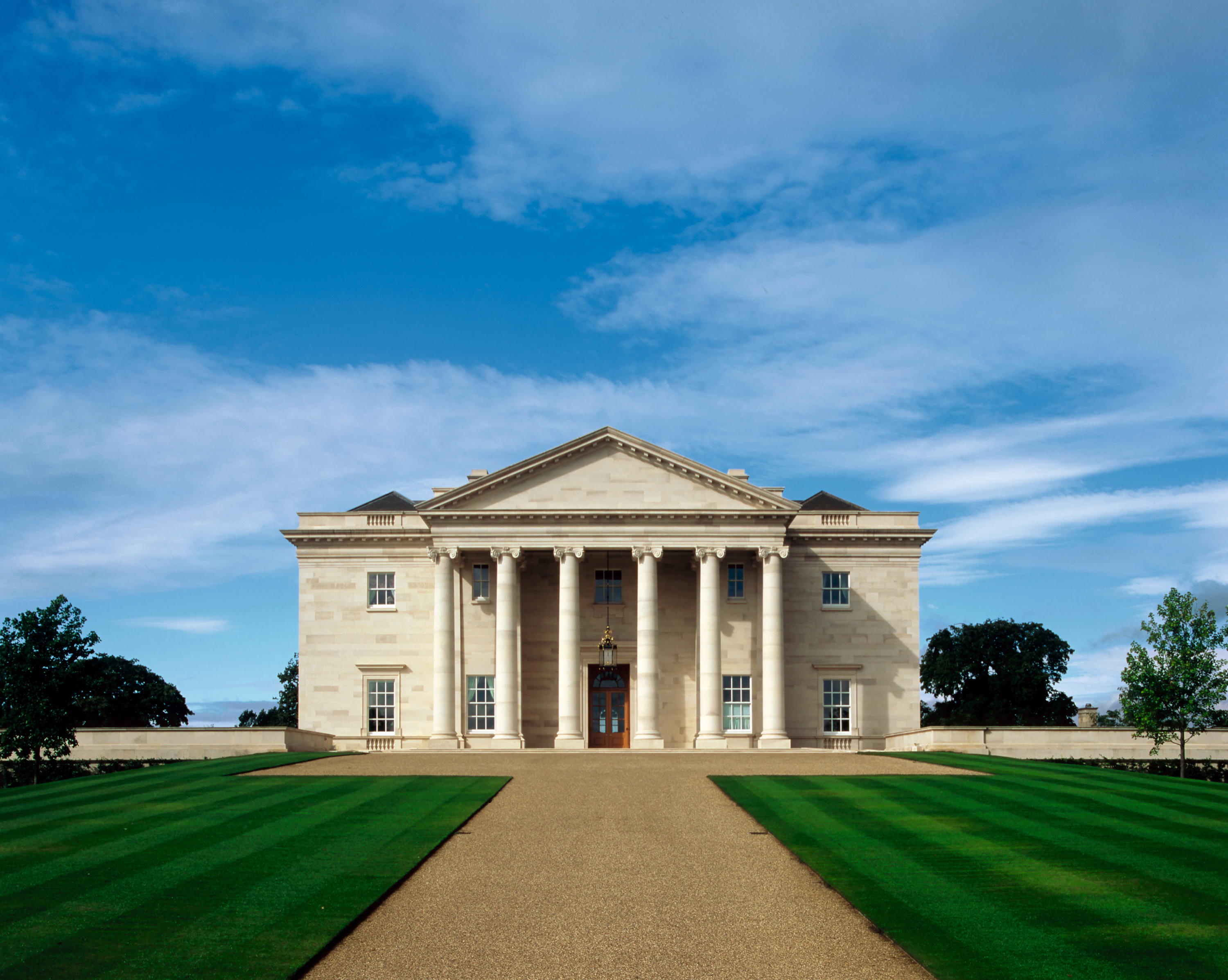 50 years ago, the English country house seemed headed for extinction. Instead it was the start of a new golden age
50 years ago, the English country house seemed headed for extinction. Instead it was the start of a new golden ageRather than perceiving the mid 20th century as a troubled period in the history of the country house, John Martin Robinson argues that it was perhaps one of the most interesting, unexpected and enterprising. All photography from the Country Life Image Archive, by June Buck, Paul Barker, Val Corbett, Will Pryce and Paul Highnam.
-
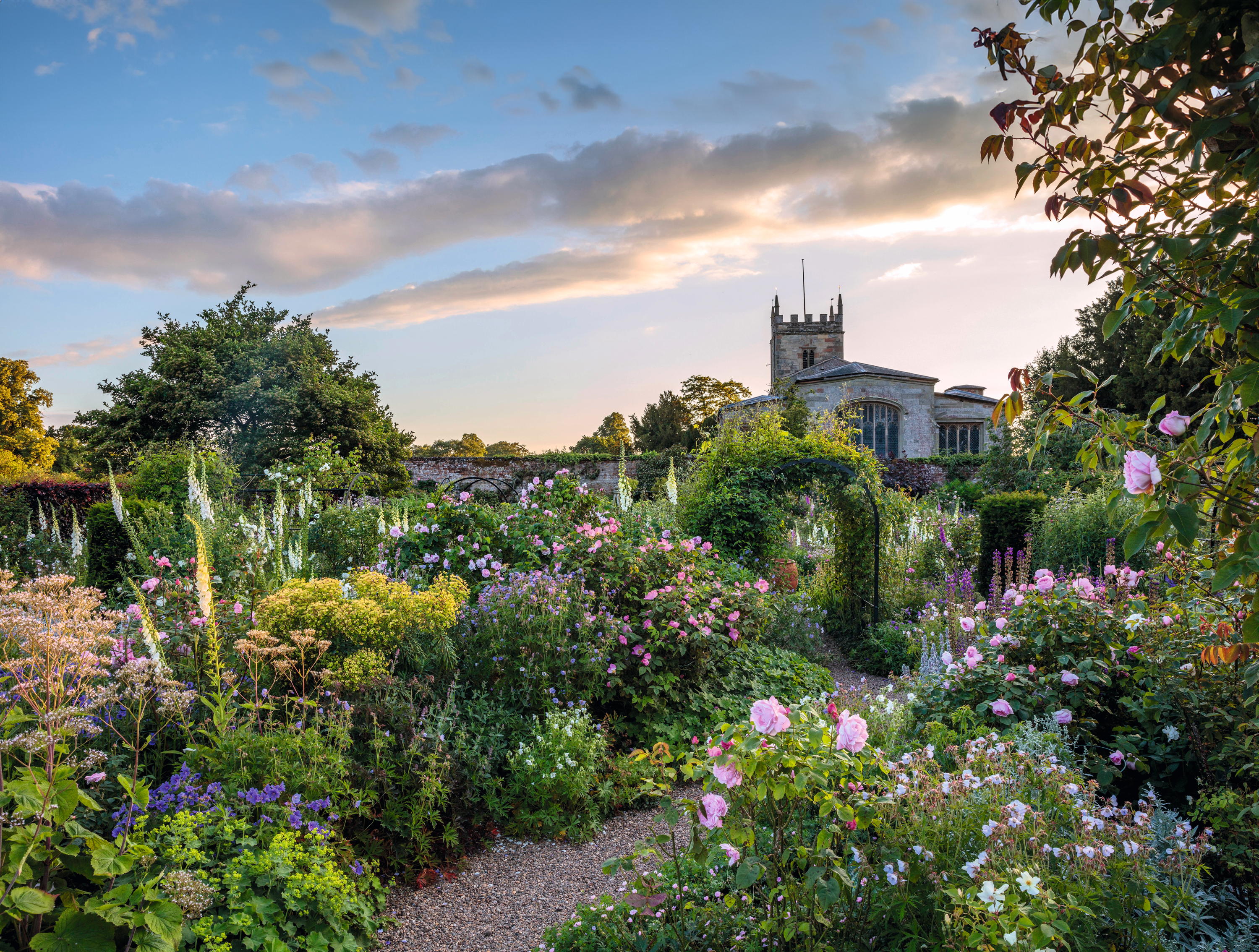 The 'Rose Labyrinth' of Coughton Court, where 200 varieties come together in this world-renowned garden in Warwickshire
The 'Rose Labyrinth' of Coughton Court, where 200 varieties come together in this world-renowned garden in WarwickshireVal Bourne finds the award winning-roses flourishing at Coughton Court in Warwickshire, where the historic garden is now in the hands of the latest in many generations of the same family. Photography by Clive Nichols.
-
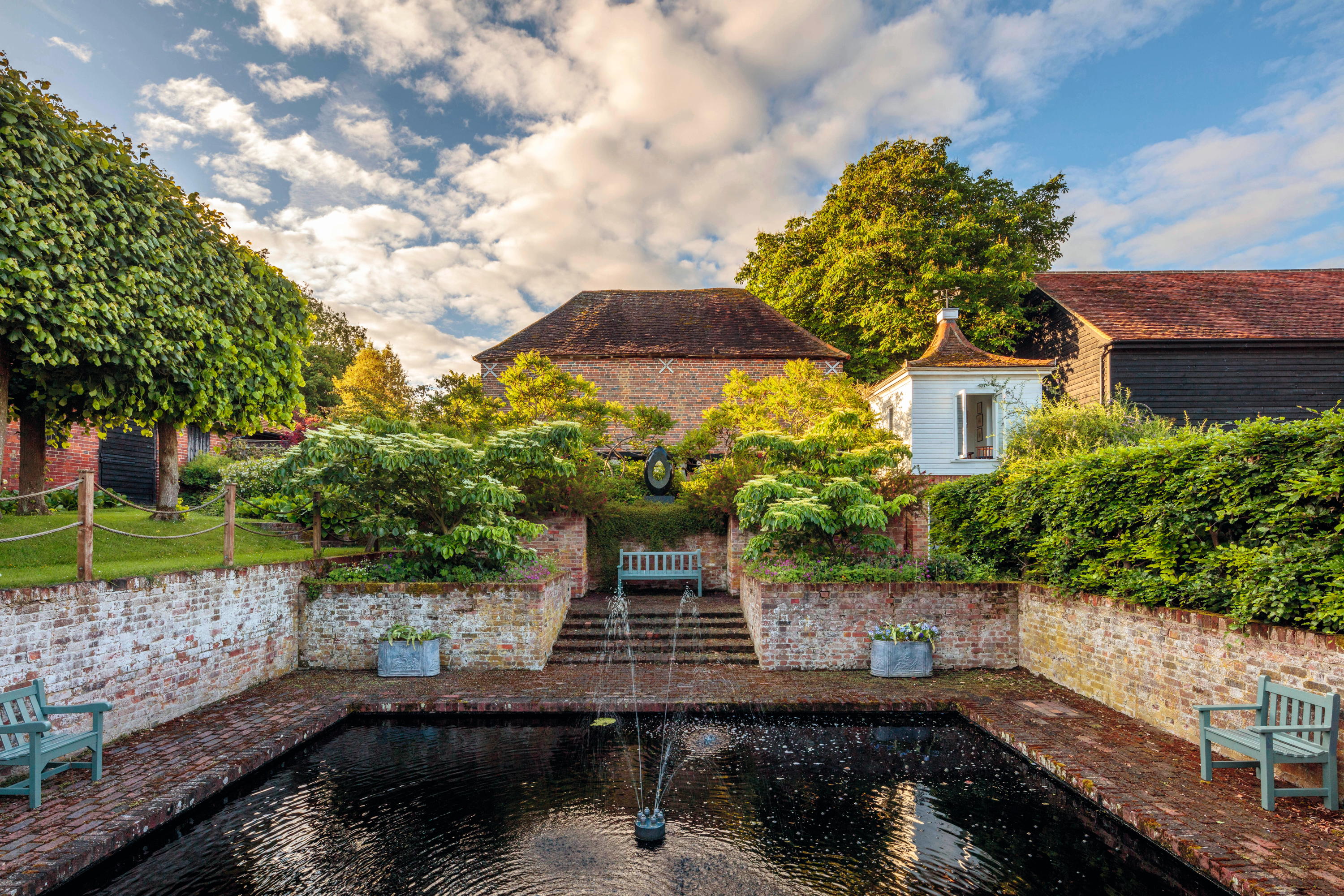 'None of this would be here had the tithe barn not burned down that night’: How the terrifying destruction of a medieval landmark sparked the creation of the magnificent gardens of Bledlow Manor
'None of this would be here had the tithe barn not burned down that night’: How the terrifying destruction of a medieval landmark sparked the creation of the magnificent gardens of Bledlow ManorAfter inheriting the Bledlow Manor in 2018, Lord Carrington has been devoted to the thoughtful renewal and replanting of this historic Buckinghamshire garden. Tiffany Daneff reports, with photography by Clive Nichols.
-
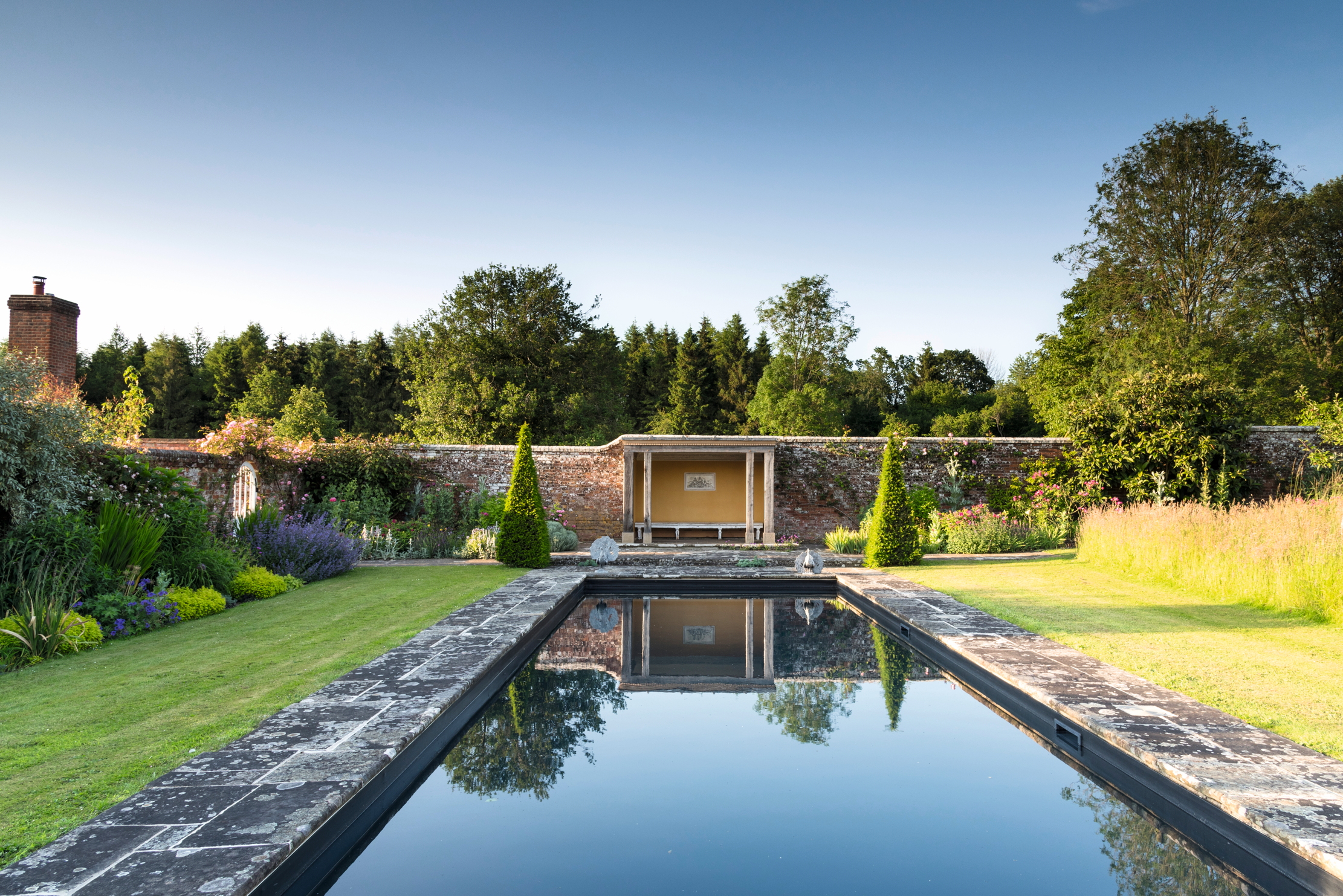 'The whole house shook. Everything was white. For four months, it felt as if we were on Mars': The story behind one of Hampshire's most breathtaking gardens
'The whole house shook. Everything was white. For four months, it felt as if we were on Mars': The story behind one of Hampshire's most breathtaking gardensWhen Kim Wilkie sculpted a tiered grass amphitheatre behind this 17th-century house, the garden finally settled into place, as Non Morris discovers.
-
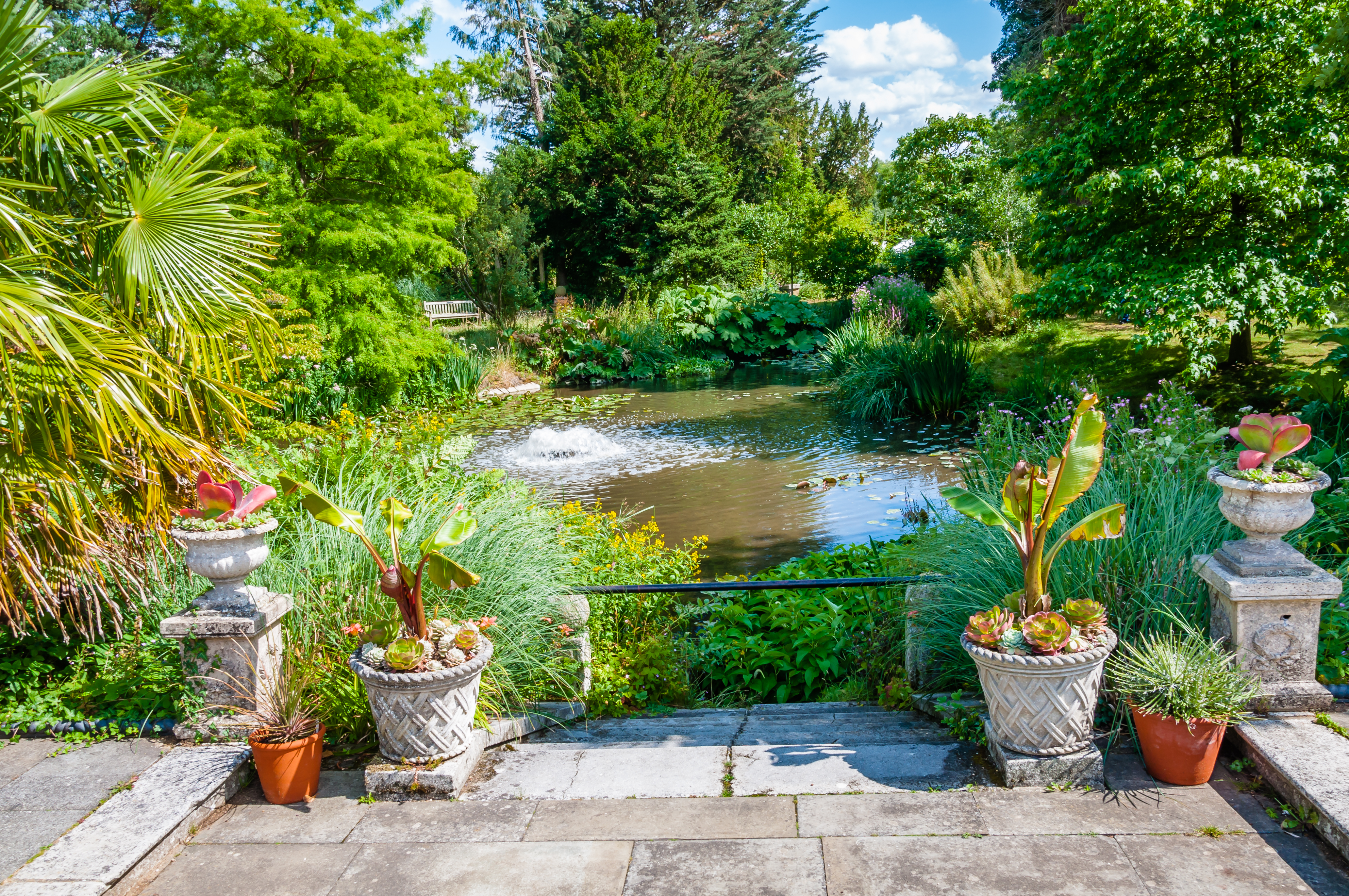 Myddleton House: The place that 'will help you learn what true gardening is' is open to everyone, and just 30 minutes from central London
Myddleton House: The place that 'will help you learn what true gardening is' is open to everyone, and just 30 minutes from central LondonE. A. Bowles created a horticultural playground in the gardens of Myddleton House that was years ahead of its time, and continues to influence even today. Isabel Bannerman takes a look.
-
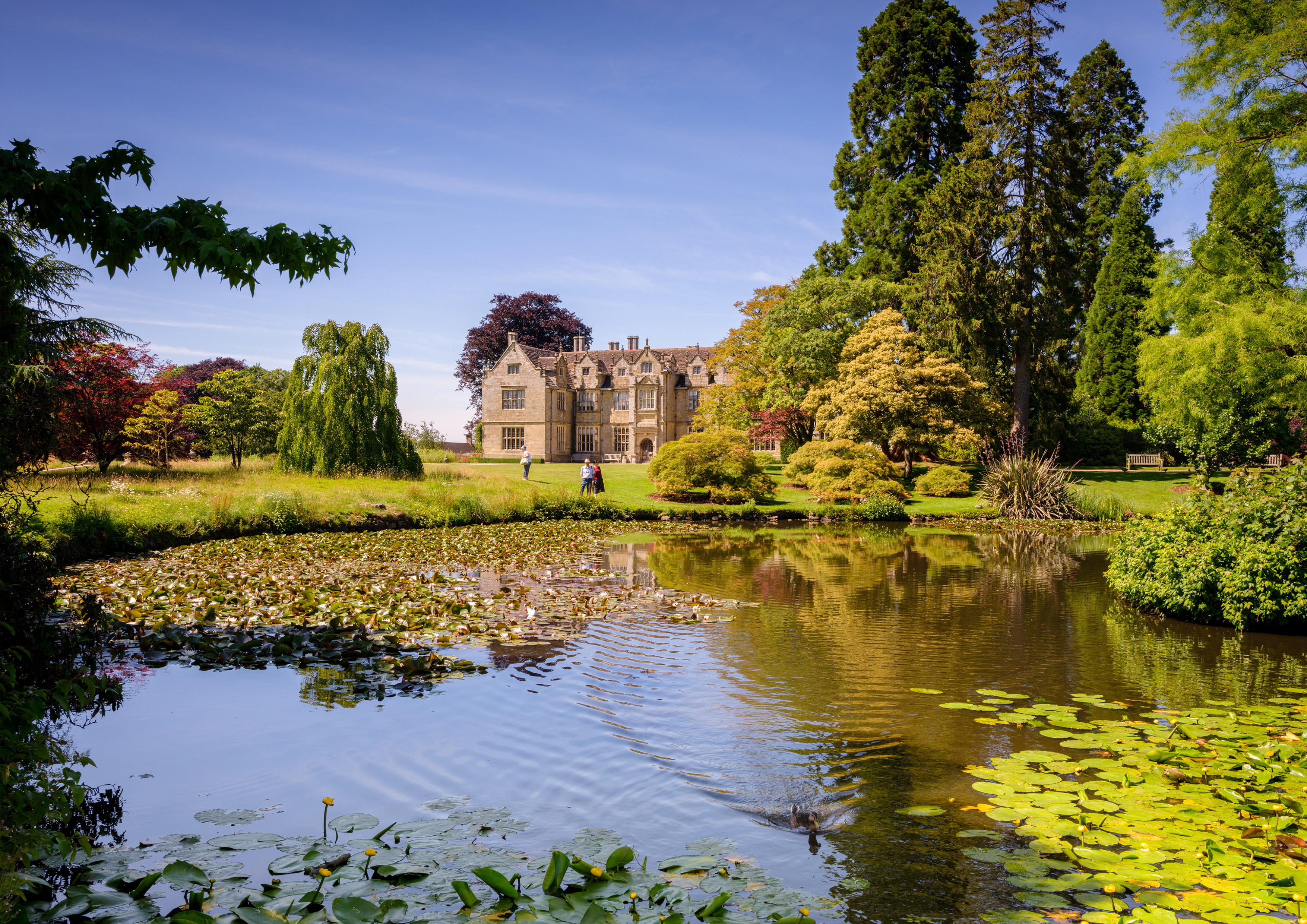 Wakehurst: 500 years of history, 2.4 billion seeds, 500 acres of planting, and scientists who might just save us all
Wakehurst: 500 years of history, 2.4 billion seeds, 500 acres of planting, and scientists who might just save us allCharles Quest-Ritson takes a look at the amazing work that's been done to update Wakehurst, Kew's trailblazing outpost in Sussex.
-
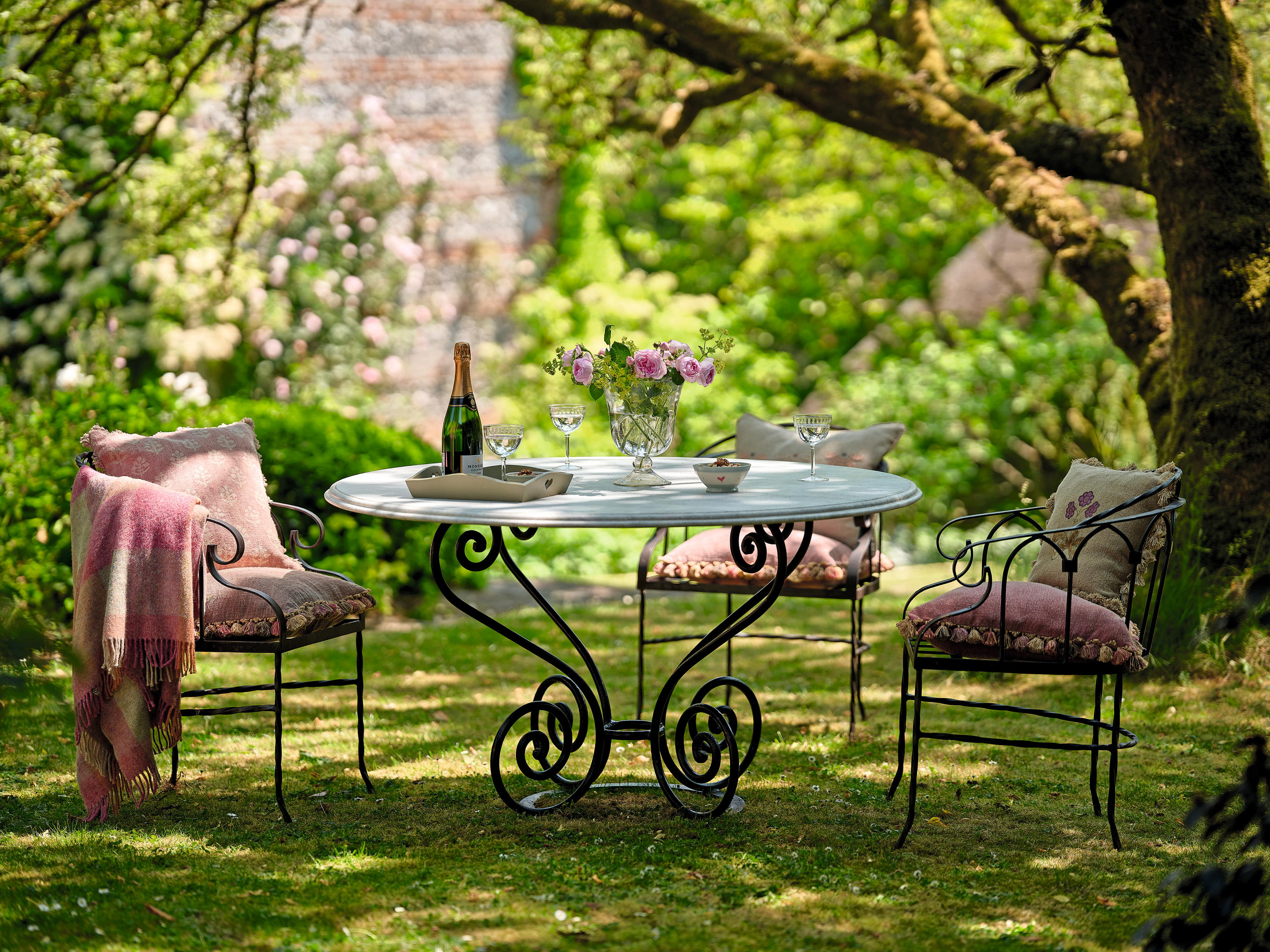 A dozen slices of al fresco inspiration from the best designers in Britain
A dozen slices of al fresco inspiration from the best designers in BritainAmelia Thorpe shares her pick of the most beautiful outdoor furniture and accessories to help you make the most of summer.
-
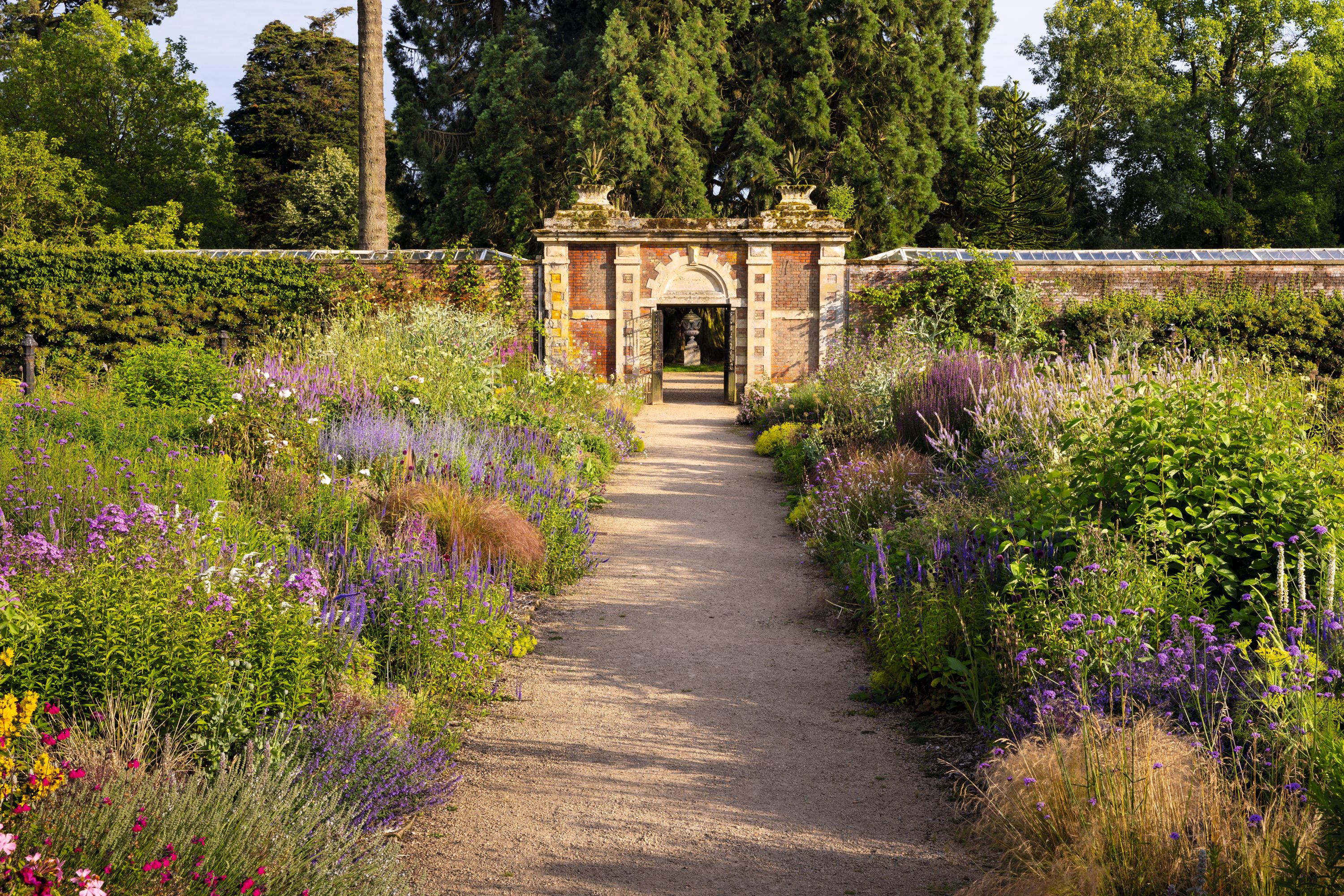 'Victorian magnificence skilfully simplified and distilled': A peek at the restoration of Somerleyton Hall gardens
'Victorian magnificence skilfully simplified and distilled': A peek at the restoration of Somerleyton Hall gardensRecent works have retained the former theatrical splendours of these gardens near Lowestoft, Suffolk, finds Tilly Ware.
-
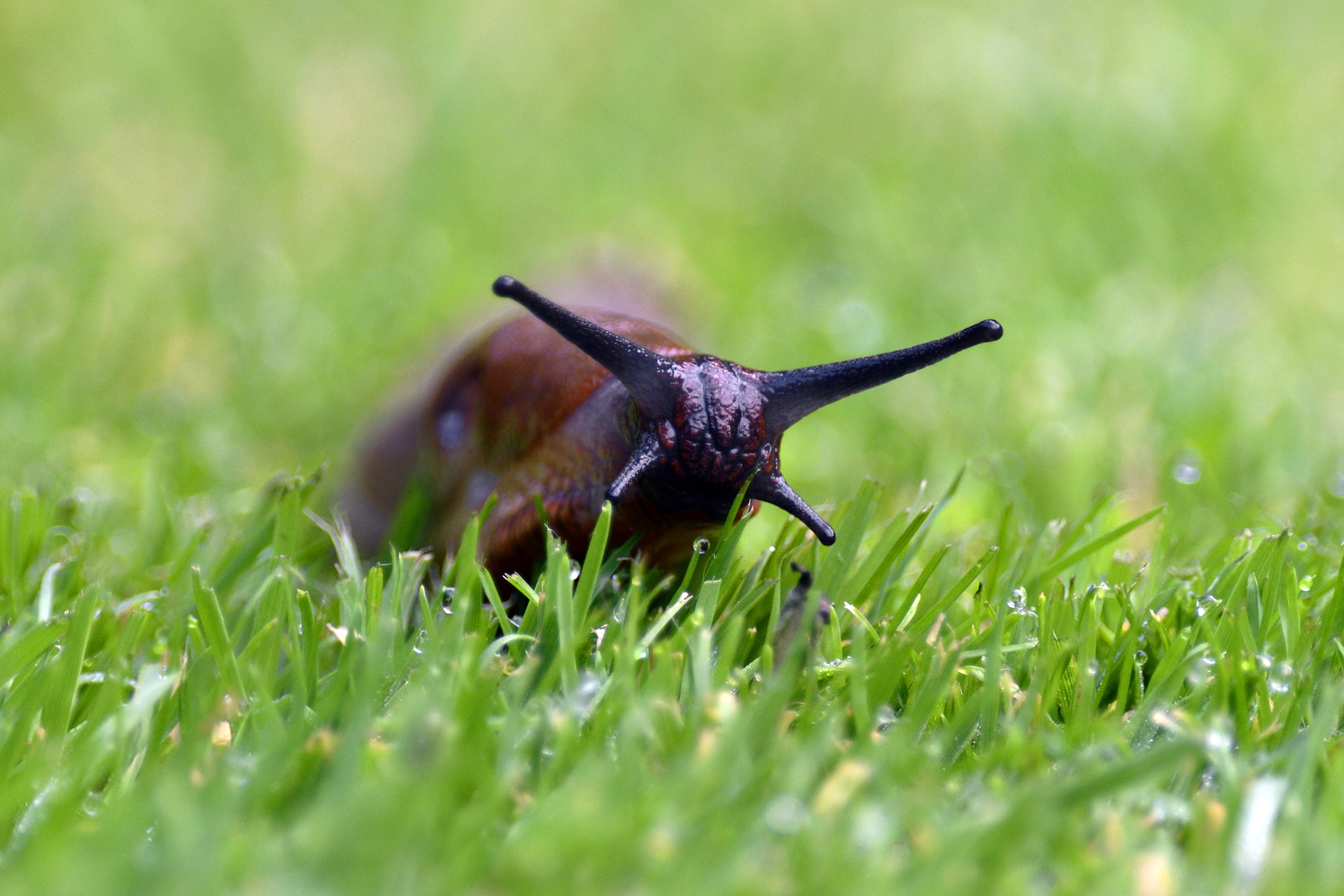 Alan Titchmarsh: I've tried every slug control known to man, and these are the only things that have ever worked for me
Alan Titchmarsh: I've tried every slug control known to man, and these are the only things that have ever worked for meAlan Titchmarsh is as charming, warming and friendly a man as anyone you'll ever meet. Unless, of course, you're a slug... in which case you'll awaken his ruthless side.